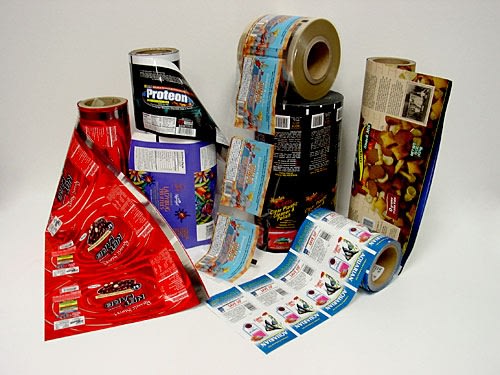 The flexible packaging market in Europe is valued at around 20 billion Euros by Andrew Reynolds, the Research Director at Applied Market Information.
The flexible packaging market in Europe is valued at around 20 billion Euros by Andrew Reynolds, the Research Director at Applied Market Information.There is room for growth to replace rigid packaging and reduce weight, as per the new YES pack from Kraft, which is replacing a bottle. There is increasing globalisation in this market as both food and packaging companies expand their geographical footprint. The focus for packaging is both on consumer appeal and product differentiation, and on improving sustainability in the supply chain.
Specialty films are being developed to provide appropriate barrier and protective properties and the latest innovations were highlighted at the annual AMI international conference on Multilayer Packaging Films 2011, held in Cologne in October.
The leading brand owner, Procter & Gamble, is constantly looking for superior innovation combining the needs of the consumer with leading technology from the supply chain. The company had US$80 billion of sales in 2010 and spends more than $700 million on packaging films. There are more than 500 packaging researchers, aiming to improve sustainability and fast track new products. P&G is famous for its FMOT – First Moment of Truth- thinking, which is the point when a consumer sees a product and makes a decision to purchase.

The development process can be reverse engineered from that starting place and needs to consider factors such as decorative effects, pack differentiation, affordable functionality and a good consumer experience in use. The 5 sustainability mantras are: reduce, reuse, recycle, remove and replace. Procter & Gamble is looking to build relationships with packaging suppliers who have a global reach and can speed up cost-effective packaging development.
The film producer RKW processes around 350,000 tonnes of PE and PP per year at 21 sites and co-extrudes up to 7-layer films. The company is conscious of the carbon footprint of its products and materials and is looking at improving sustainability. For example, a highly mineral-filled polyolefin wrapper can replace an aluminium laminate and reduce the carbon footprint by 35-60%. The company has many new products including laminate PP films for retortable pouches that are heat stable to 125C for 45 minutes.
Dow is producing sealing layer materials to improve film seal integrity, thus reducing food waste. In a 2009 study conducted by WRAP and the University of Lincoln it was found that around 8% of packages failed in the supply chain.
Three factors should be considered in VFFS performance: heat seal, hot tack and caulkability. The hot tack performance is the ability of the material to resist the spring back force, and the caulking property is the ability to flow into gussets and wrinkles. Thus a polyolefin plastomer (POP) that fills the gaps enables hermetic sealing and Dow has an octene-based range of these materials. Also in the adhesives and sealants category, Henkel is looking at food safe adhesive interlayers for multilayer packaging films.


